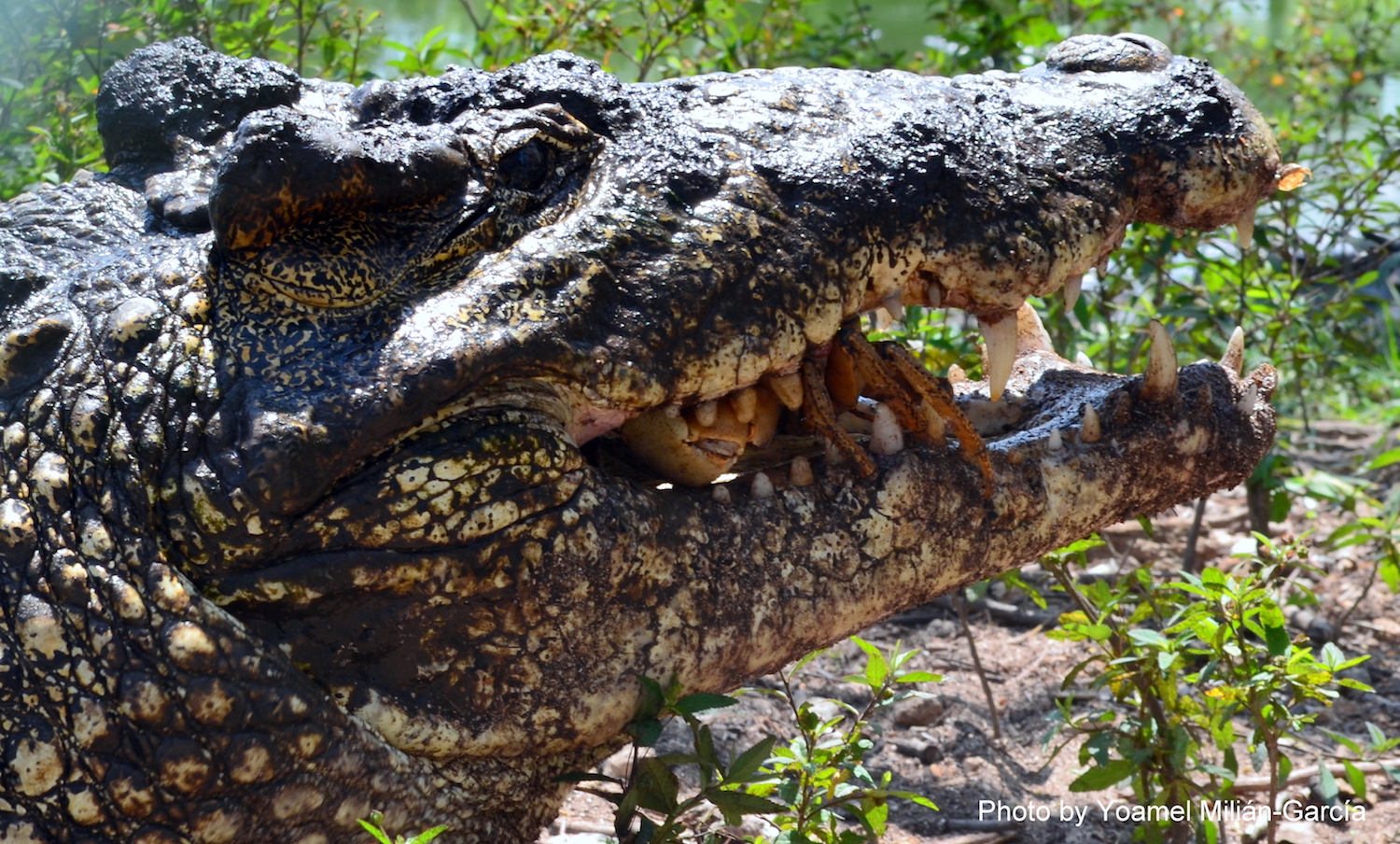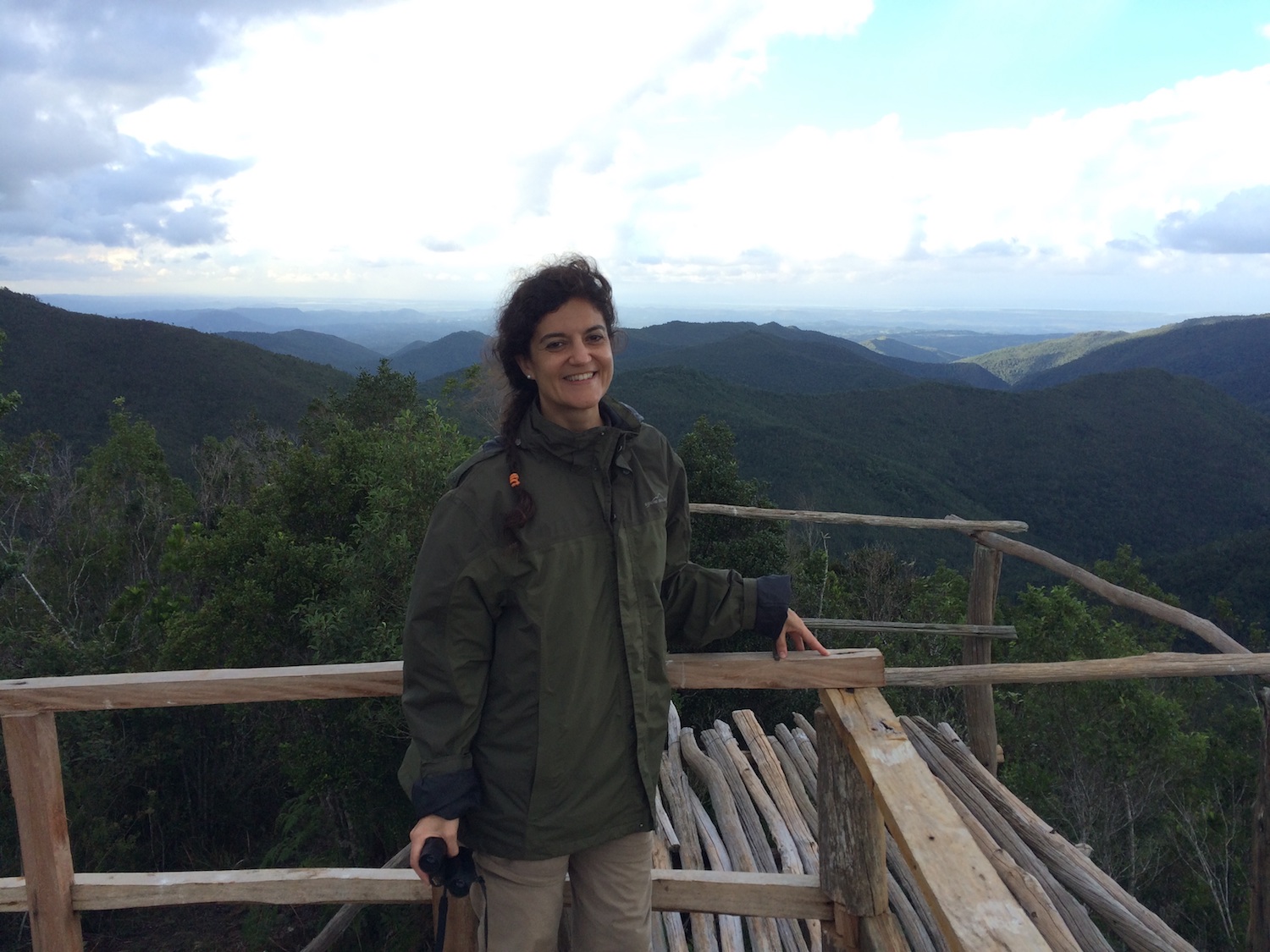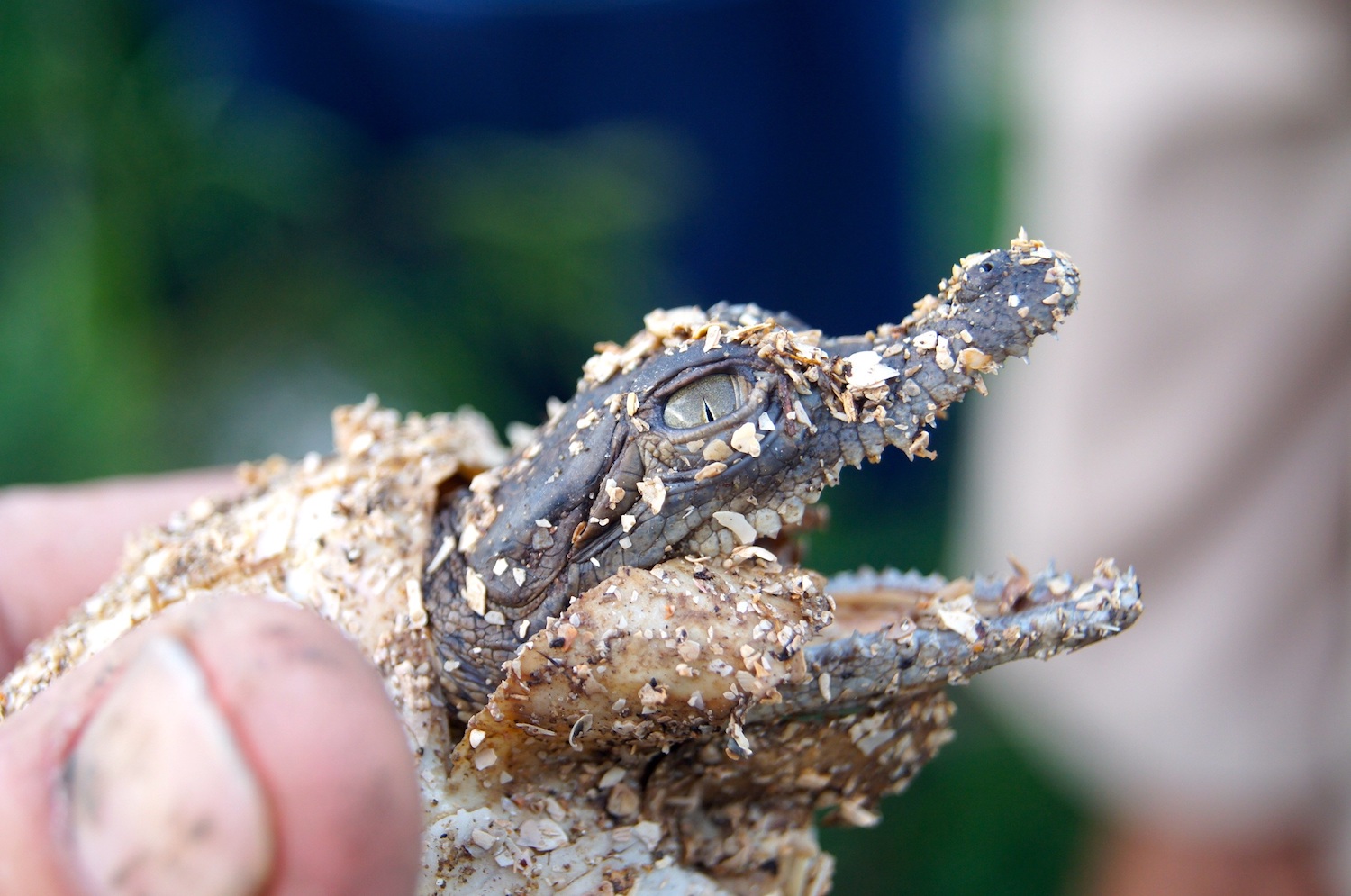Take It from the 'Crocodile Lady': Conservation Needs More Women (Op-Ed)

Natalia Rossi is the manager of the Cuba Program for the Wildlife Conservation Society (WCS). This article is part of Women's History Month, and celebrates women in science. Rossi contributed this article to Live Science's Expert Voices: Op-Ed & Insights.
I, a crocodile scientist, am a woman in conservation. As is my colleague Christelle Nguizi, who tirelessly patrols the flooded forests of the Lac Tele Community Reserve in Congo to protect elephants and combat poachers; and my colleague Lilian Painter, who directs the Wildlife Conservation Society's Bolivia Program and — working with partners — secured the protection of 2.3 million hectares (5.6 million acres), the most biodiverse region for plants and animals in the entire world.
My colleague Emily Darling takes coral reef conservation science to a completely new level by linking social and ecological systems to make reefs and coastal communities more resilient. And there are so many others. We are all women in conservation. From every possible angle, we are working to conserve the world's precious biodiversity. We are re-shaping the field and we are not afraid of tackling new challenges. [Photos: 'Giant Crocodile' Egyptian Mummy Is Packed With Baby Crocs]
But the path here is not always easy. Despite women's rising numbers in this field, the majority of people in senior positions in conservation worldwide continue to be men. Challenges often begin the moment a woman enters the profession. (For instance, people may ask whether you are capable of withstanding the harsh field conditions that "men do." But I would rephrase that question to ask whether people can withstand the harsh field conditions that women do, as we are hardcore.) As women climb the ranks, these challenges can continue, as your voice is sometimes the only woman's voice in the room. Even in the field, perceptions toward the types of roles and jobs of women are expected to hold may not match your outfit. But a new wave of women scientists is entering the field of conservation, and we are working from the field to the policy-level to address these problems and change attitudes.
I am so immensely proud of my female colleagues. But reaching these heights was not easy. At least for me. Adjusting to a new country when I first arrived from Argentina to pursue my dream of studying conservation biology was a tough initial hurdle. Then there were times in the field when being a woman encompassed additional difficulties and even risks.
That comes with being a crocodile specialist, of course. You can only imagine the "toughness" that you have to show when getting involved in crocodile conservation, a still male-dominated field. When you jump into muddy waters full of crocodiles and all male eyes are on you, and you feel the silent wonder: Is she going to make it? I imagine that same scrutiny was imposed on so many of the women conservationists of my generation and before.
But I do this work because I see so clearly that the interconnection between species, habitats and the health of ecosystems is critical to local communities and our planet as a whole. Where I work in Cuba, two native crocodile species are found: the critically endangered Cuban crocodile and the vulnerable coastal American crocodile. These top predators are not only critical for keeping the food chain in check but also true ecosystem engineers that shape and help maintain mangrove forests through excavating massive underwater caves and canals, which create water dynamics and essential micro-habitats that support a rich diversity of species. The threat of development of the country's coastal areas, along with historical poaching and a restricted range for the Cuban crocodile, jeopardize the survival of both crocodiles and mangroves. For almost a decade, we have been working alongside local partners to better understand crocodiles and design strategies to strengthen their populations. From reintroduction of crocodiles in the wild, to the provisioning of additional nesting sites, to community involvement and outreach, we have been growing our efforts to save crocodile species for future generations.
Get the world’s most fascinating discoveries delivered straight to your inbox.
Mentorship matters
For so many women across the world, it is still a dream to enter this field, in part because of the pre-conceptions on what women can and can't do on the job. For instance, some may wonder whether women can take on the physical tasks of handling wild animals. Nevertheless, to these women I say things are changing! It is possible! Conservation needs your vision, ideas and strength more than ever. Communication channels between women conservationists are wide open, and there is nothing more powerful than mentorship and sharing.
In my case, I have also been blessed with wonderful mentors who were men, including the late John Thorbjarnarson (1957-2010), a world-renowned herpetologist who helped to rescue numerous species from the brink of extinction. John T, as we called him, saw something in me that I could not see at the time. His encouragement, passion and sense of humor made my firsts steps working in Cuba to protect crocodiles and coastal wetlands feel effortless. [Photos: Ancient Crocodile Relatives Roamed the Amazon]
I am happy to continue in the footsteps of Thorbjarnarson and my amazing colleagues in Cuba. Using our passion every day to help species, ecosystems and communities thrive gives us a sense of purpose and brings us together. But I truly believe that the strides made by women in the field of conservation will be meaningful only if these achievements by conservation role-models and leaders open up a path for the next generation of young women scientists. Such a path would include more opportunities for matching young female conservationists with mentors, and more concrete avenues that provide that precious "first opportunity" in conservation for aspiring women.
I have no doubt this a new wave of women will bring creative solutions to conservation challenges in ways we cannot even imagine today.
I had a taste of that at the "The Girls Advancing in STEM Conference" last year. There, 100 high school girls from around the United States gathered to learn about science, technology, engineering and math, the STEM fields. Through mentorship and establishing connections, we can not only let others know about our work but, most importantly, unleash so much potential as a community of women conservationists in the world. Together, we can advance to all levels of leadership and responsibility.
One thing is clearer than ever to me today. These are exciting times to be a woman (and a man) in conservation!
- In Photos: Response Teams Try To Save Starving Killer Whale
- In Photos: Mexico's New Ocean Reserve Protects Stunning Biodiversity
- In Photos: Giant Owls and Painted Snails: Incredible Creatures from Cuba
The views expressed are those of the author and do not necessarily reflect the views of the publisher. This version of the article was originally published on Live Science.
Editor's Note: This article was updated to indicate that the Girls Advancing in STEM Conference took place in the United States, not in Cuba.






